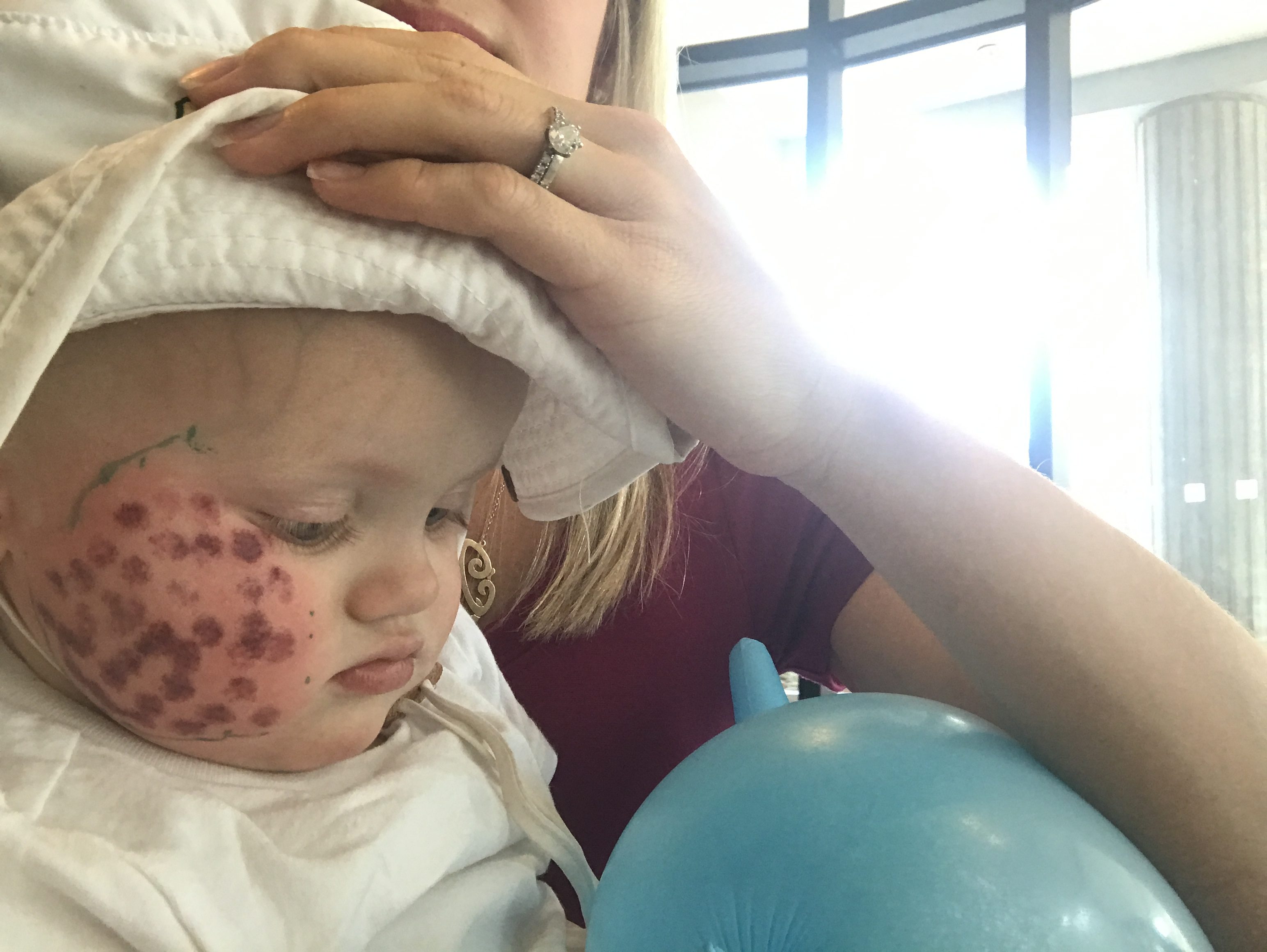

Parents can expect their children to have some swelling and bruising at the treatment site, which should only last for a few days following treatment. This will prevent the child from moving during the treatment and help effect a more complete treatment. As the child gets older, the option for general anesthesia – especially if the port-wine stain is on the face, may be offered.

Most laser procedures can be performed in the office especially when the patient is an infant. Laser surgery for treating port-wine stains is completed under local anesthetic in the form of a shot, ointment, or spray to numb the area in preparation for treatment. The younger a child is, the more likely laser treatments will be successful in reducing the pigment of the birthmark. However, vascular laser surgery can also be effective in treating port-wine stains in older children and teenagers. Children who are very young are most commonly treated this way. Lasers are especially effective on the neck and head after several treatments. High concentrations of light from lasers are used to treat port-wine stain birthmarks. If the child has Sturge-Weber Syndrome, treatment may be slightly different. If the port-wine stain is not in connection with the condition, the birthmark can be treated with vascular laser surgery. However, the percentage goes up to 26% when the port-wine stain is on the face. Overall, about 6% of children born with port-wine stains have Sturge-Weber Syndrome. To determine if the port-wine stain is in connection with this condition, your doctor may order X-ray images, a CT scan, or an MRI. Vascular laser surgery is safe and effective, but before a doctor treats port-wine stains, it must be determined if the port-wine stain relates to Sturge-Weber Syndrome. Light Amplification by Stimulated Emission of Radiation or laser, specifically vascular laser, targets abnormal blood vessels, without damaging surrounding healthy tissue. This is accomplished through vascular laser surgery. Port-wine stains do not go away on their own, but they can be lightened with treatment.

As a result, if a port-wine stain is on the face, most parents seek treatment for their children.Īnother reason why parents seek treatment for port-wine stains is if the birthmarks are in very prominent places, such as the face. Stains on the eyelids can affect sight and might even lead to glaucoma. This condition causes seizures as well as learning disabilities, like developmental delays in children. Sturge-Weber syndrome is often accompanied by port-wine type stains. However, port-wine stains that form close to an eye or on the forehead, may signal a neurological condition. Sometimes, the birthmark doesn’t need to be treated, since it is not always a telltale sign of an underlying condition.
Port wine stain removal skin#
Port-wine stains can appear anywhere on the skin but are primarily located on a child’s face or neck. Port-wine stains often grow darker and larger in size with age. Though some port-wine stains don’t appear until after birth, most are congenital, which means they are present when a baby is born.Īs small blood vessels (capillaries) dilate, the result is vascular malformations/port- wine stains. Roughly, one in 330 babies is born with a capillary malformation. They appear as red-pink stains on the skin and are vascular malformations, meaning they are physical manifestation of abnormal blood vessels on the skin. Capillary malformations, also called port-wine stains are a type of birthmark.


 0 kommentar(er)
0 kommentar(er)
